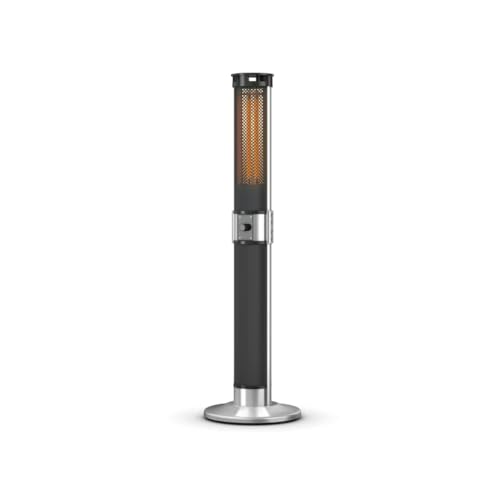12 Companies That Are Leading The Way In Patio Heat Lamp Electric

How to Choose a Patio Heat Lamp Electric
There are a variety of options when it comes to heating your patio. Electric heaters are much more convenient than propane models which require refueling. They can be heated immediately by pressing a button, or flicking a switch.
They don't release any gasses that could cause an health risk. Some offer adjustable heat settings for varying distances.
Type of Heater

You can enjoy your outdoor living space well into the evening and throughout the seasons by using the right patio heater. Patio heaters are available in a variety of different styles including freestanding propane models, natural gas models as well as ceiling or wall-mounted electric radiant heaters. Your choice is contingent on the size of your space, your power source and personal preference.
Most patio heaters are powered by electricity or liquid or natural gas and produce heat through a combination of convection and radiant heating. Their output of heat is measured in watts, and can be converted to British thermal units (BTUs) to compare. Some also have adjustable heat settings for greater flexibility.
Patio heat lamps include a burner mounted on a pole and a perforated screen that reflects flames and radiates heat downwards to warm objects, people and furniture. hyperlink include reflective reflectors on top of the burner, which can be silvered in order to decrease the amount of heat is lost upwards.
patio electric heater are the most popular heaters for patios. They can heat multiple tables quickly and evenly. These patio heaters are portable and can run on a propane tank or be plumbed in to your natural gas line. This is more convenient and comes with lower initial costs, but requires fuel.
Gas patio heaters are becoming more popular as more houses have natural gas lines. They are easy to set up, but do require a dedicated and functioning gas line to perform in a safe manner. Natural gas heaters that are portable are available with extension hoses that can help overcome this limitation, but they could be a trip hazard and may pose an additional fire risk when not in use.
Safety
Most electric patio heaters are safe to use in enclosed areas because they allow the heat to radiate outward instead of upwards towards things that ignite, like the roof. However, electric patio space heater 're not designed to be used under an open roof. The heater should be set at minimum 18" from adjacent walls or 6" from the ceiling to prevent fire hazards.
Patio heaters made of propane and gas can only be used in enclosed areas that are fitted with a durable cover designed for outdoor use. These types of covers are typically made of fire-resistant canvas and have the option of having a roof that is closed. These types of patio heaters have safety concerns relating to the fumes and flames they produce. They should be placed away from items that ignite, such as chairs and curtains.
Follow the instructions and safety measures of the manufacturer before installing a patio heater or heat lamp. Be sure to choose the one with UL and CSA certifications, and read the owner's manual thoroughly. Be especially careful around children and pets and make sure the heater is not near them when it's running. Some patio heaters that are freestanding, such as EUROM, come with a built-in tipping safety that shuts down the device in the event that it falls over.
If your patio heater is connected to a natural gas line, you must be sure to check the condition of the line regularly and be sure to have it tested by a licensed professional to identify leaks. If the line has to be replaced, make certain to get a licensed plumber. A professional is able to determine if the line needs to be run through an underground pipe or not. In addition, a professional can make sure the heater for your patio is connected into an outlet that's GFCI (ground fault circuit interrupter) certified to guard against electrical shocks and fires.
Installation
The height of the patio heater will determine the amount of heat it emits into the space. The heater should be positioned away from any surfaces such as wood and plastic that can deform. Depending on the model of the heater, you can choose to place it on a structure or wall using standard mounting brackets. Some models have a soft start, which decreases the peak current to safeguard your circuits.
